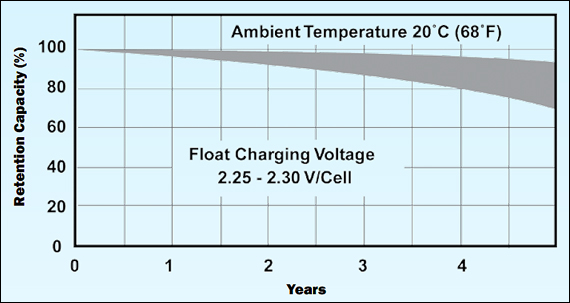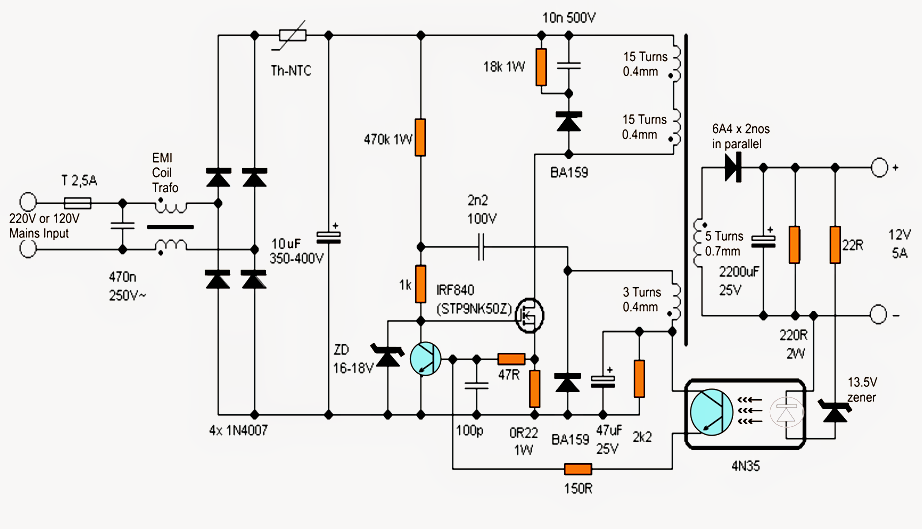I am going to show you LM317 lead-acid battery charger circuit.
I like this type of battery because of so cheap. You too, right?
Jul 26, 2019 A 12V battery is normally recharged at 14.2 V or 2.40V per cell. Once we attach the charger with the battery, voltage drops from the actual supply 14.2 V level to the discharged level of the battery. As the battery gets charged the terminal voltage begins increasing gradually, until it reaches the set 14.2 V. Jul 19, 2019 Simple 12V Battery Charger with Battery Indicator. This is a simple 12V battery charger circuit with indicator circuit is a smart charger circuit. You are able to ideally take advantage of this circuit for applications such as inverters, portable chargers, etc. This design additionally includes a twin indication system in the form of a battery. Aug 22, 2020 Simple automatic cut off battery charger. Comes to look in the circuit. I use it for 12V 7AH battery and lower. So the charging current is 2A. So I use a 2A, 12V transformer in the unregulated power supply. In load or while in charge is 13V to 15VDC. Suppose, the voltage battery is 12.4V. The relay does not work.
This lead-acid battery charger project for 6V, 12V, and 24V battery. Although there are many methods to choose from.
But you may be missed If not read this post to end.
- The project Arduino Controlled 12V battery charger circuit is advance version of previous posted project “12V, 7Ah Smart Battery Charger with PCB Diagram”. This charger also has the features of bulk stage charging and float stage charging as in previous circuit. Silent features of Arduino Controlled 12V battery.
- Tag: 12v 7ah battery charger circuit diagram. Lead Acid Battery Charger Circuit. We know Lead Acid Battery is the most widely used rechargeable battery.
Often I like to use LM317 as a power supply. Because it is so easy to use, with a few parts. And important cheap, too.
Why use LM317?
12v Battery Charger Schematic
If your main goal is to use the battery for a long time. You have enough backup batteries. For your work without interruption.
Did you know we can recharge batteries almost five hundred times? But must be recharged with the correct method.
It is easy.
Manufacturers always print the appropriate voltage and current for charging the battery.
The important thing is heat while charging the battery.
It is natural of electronic parts. If it is hot. It has a short life. The battery, too.
And the heat is caused by the voltage and current levels are too high
Most problem is too high voltage level. Should not normally exceed 14V.
When we use LM317 to maintain a constant voltage. So, It is great.
Of course, these circuit below is not an instant circuit. Perhaps great ideas may be the best ways for you to improve your electronics skills.
Note: Though this project is good. But it may difficult to build and expensive. I love these projects better: Simple auto cut off 12V battery charger
Here are 4 circuit ideas. Ready to get started?
6V-12V Lead Acid battery charger using LM317
Imagine you have both batteries 12V and 6V. You may be interested in this lead acid battery charger circuit.
Because…
It can charge both 6V and 12V two in one by choosing of S2-switch.

Look: in the circuit below.
At output current max 1.5A as limiting current of LM317K.
How it works
When you see the circuit. It looks like a DC voltage regulated power supply using LM317. Some love this circuit. any circuit requires energy.
The first section, T1, S1, D1-D4, C1, and C2 are an unregulated power supply. Do you know about them? I guess you will understand it. And you may read it more.
They will reduce AC main voltage down to 21V DC.
Have you ever wonder about the value of these parts?
Yes, the designer has an interested concept. I like 2 things.
Transformer—when we use 1.5A output current. So should 2A transformer. And the output voltage is about 15VDC (approximately).
So, input voltage of LM317 should be about 17V to 22V DC. Because if over-voltage it is easy to hot. But too low is not keep a constant voltage well.
12v Battery Charger Schematic Diagram
Filter Capacitor—We need full output power and low ripple voltage. According to basic principles, we should use the capacitance of C1 and C2. The 2,200uF per 1A input. So, the filter capacitor is 4,400uF(2,200uF+2,200uF).
Then, see in LM317 Regulator section. We know to change R3 and R2 to set the output voltage. Which control with S2.
- Closed switch S2 for 6V battery charger. —See R2 and R3 connect together in parallel. It makes the output voltage is about 7 volts.
- Opened switch S2 for 12V battery. In contrast, R2 runs only is high resistance than two. So, output voltage is about 14 volts.
Are you understand?
The diode D3 and D4 help protect a reverse voltage from an output load. It will over current up until fuse is blown. And protect charging with the wrong polarity.
Parts you will need
IC1: LM317K Variable voltage regulator TO-3
D1-D4: 1N5402, 3A 200V Diodes
D5,D6: MBR1545 Schottky Diodes & Rectifiers 16A
C1,C2: 2,200uF 35V Electrolytics
C3: 47uF 25V electrolytic.
0.25W Resistors, 5% tolerance
R1: 220 ohms
R2: 2.2k
R3: 1.8K
S2: Toggle SPST Switch
S1: ON-OFF SPST switch
F1: Fuse 0.5A or 1A
F2: Fuse 2A
T1: 117V/230V AC primary to 15V,2A secondary transformer
See: LM317K pinout
12V lead acid battery charger using LM317K
Suppose that you have Dry cell lead-acid battery, 12V 7.5hA sizes. And you need a battery charger, simple and economize. Also, you have 18V unregulated power supply.
I recommend the circuit diagram below. It uses LM317K as main too.
This circuit has the principle is simple. And can keep a stable voltage at 13.5 volts. By setting of R2 and R2.
Which you may use current 1A to take time charging about 8 hours or 10 hours. Then, It will have full electric energy.
Also, above circuit, it has D1 protect a reverse voltage from an output load. With Furse blow to cut off the circuit.
See LED1 shows correct polarity current connection. And D2 connected in reverse biased to show a wrong battery connecting.
Parts you will need
IC1: LM317K Variable voltage regulator TO-3
D1: MBR1545CT Schottky Diodes & Rectifiers 16A
C1: 2,200uF 35V Electrolytics
C3: 47uF 25V electrolytic
C2: 0.1uF 50V Ceramic capacitor
0.25W Resistors, 5% tolerance
R1: 220 ohms
R2: 43 ohms
R3: 2.2K
R4: 1K
LED1: Green 5mm LED
LED2: Red 5mm LED
F1: 2A Fuse
24V Automatic Charger and Full charged indicator
This is a 24V automatic charger circuit and Fully charged indicator.
Look:
Imagine you have 24V battery, 10Ah. You can also use LM317K to build a 24V lead-acid charger circuit for this battery.
It requires a stable current about 1.5A and 27volts constant voltage.
They are similar to the above circuit.
Here is the step-by-step process.
First, it has DC unregulated power supply, 35VDC at 2A is across C1.
This is a voltage input of LM317K. Which it can withstand voltage up to 40V.
Then, LM317 and other parts keep stable voltage at 27V. We adjust VR1 to set this voltage.
When the battery is fully charged or using current more than 2A. The R6 is a polyswitch. It will cut off the current to the battery.
Full Charged indicator—when full charging the battery voltage up to 27V. The TL431 will recognize this voltage level. Then, turn on LED1 to light up immediately.
Also, above circuit, D5 protect a reversed voltage from the battery.
And, R6 cut off this current too.
IC1 should hold with a large heat sink.
Parts you will need
IC1: LM317K Variable voltage regulator TO-3
IC2: TL431 Precision Shunt Regulator TO-92
D1-D5: 1N5402, 3A 200V Diodes
C1: 2,200uF 50V Electrolytics
C3: 47uF 50V electrolytic
C2: 0.1uF 50V Ceramic capacitor
0.25W Resistors, 5% tolerance
R1: 220 ohms
R2: 4.3K
R3: 1K
R4: 82K
R5: 10K
LED1: Green 5mm LED
R6: 2A Polyswitch
VR1: 1K
VR2: 20K
LM317 Universal battery charger


Here comes a very simple idea is the universal battery charger circuit.
When input power is applied to the circuit.
Note:
This is another concept of the LM317 battery charger. But I haven’t tried it yet. I keep this circuit. For future learning only.
The SCR1 (Silicon controlled rectifier) turn off, then not has a bias current path to ground.
The LM317 acts as a current regulator, It is connected to the battery thought a one way diode D1, limiting resistor R1, and a bias resistor R2.
The D1 prevents the circuit from battery discharging, when the power out off from this circuit.
As the battery charges, the voltage across A point potentiometer R5 and some point rises, to turn on the SCR1.
Then current from the regulator LM317 can flow to ground, so now the IC1 is in functions the voltage-regulating mode.
The R6 be used to control the output voltage.
When the SCR1 turn on, it also provides LED1 through R3 with a path to ground.
But when LED1 is on, this circuit is in the voltage-regulating mode, while LED1 is off to be in the current-regulating mode.
You may like these circuits, too.
Related Posts
GET UPDATE VIA EMAIL
I always try to make Electronics Learning Easy.